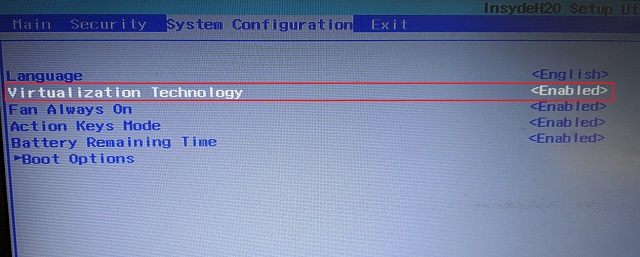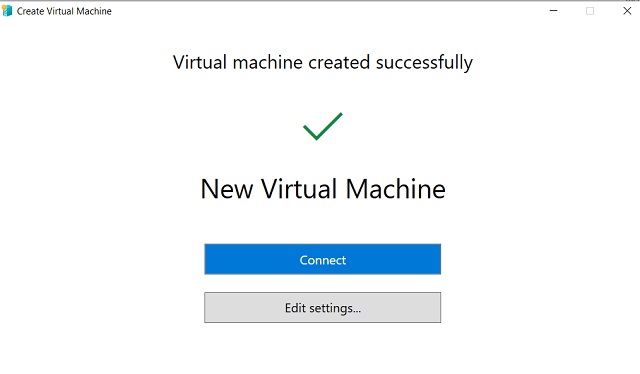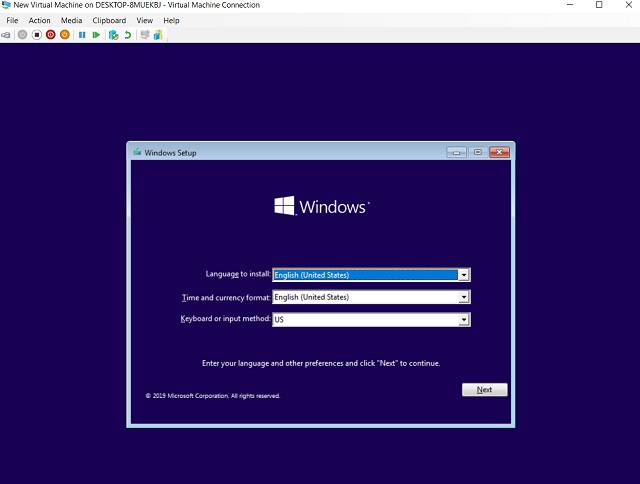Virtual Machine is a great way to test new operating systems, check the authenticity of unknown applications and also revisit older Windows OSes like XP or 7 for fun. Not to mention, now you can also use Linux on Windows 10 virtual machine and that is simply great. However, the sad part is that somehow it has remained a utility meant only for developers. Nevertheless, in this article, we bring you a detailed tutorial on how to create a virtual machine on Windows 10 along with some extra tips. Along with that, we have also provided solutions to common issues while creating a virtual machine. Now having said that, let’s go ahead and learn about the steps.
Virtual Machine on Windows 10
Before we begin, there are three key points you must know. In this article, we are not using a third-party program, but utilizing the powerful virtualization application called Hyper-V which comes pre-installed on Windows 10. Being a native application, Hyper-V works much better than any other program including VMWare and VirtualBox.
The second point is that your machine should be running a Pro, Enterprise or Education edition of Windows 10. Hyper-V is not available on the Home edition of Windows 10 so keep that in mind.
And the third point is, Hyper-V is not enabled out of the box and you have to execute a series of steps to enable it on Windows 10. In tandem, you will have to access your BIOS or UEFI settings to configure virtualization. So broadly these are the three points you must know before creating a virtual machine on Windows 10. Now having said that, let’s get started.
1. Enable Virtualization and Hyper-V Support
1. First of all, restart your computer and boot into BIOS. Usually, the boot key is F10 or F9, but if you are not sure, you can look for it on the internet depending on your PC manufacturer.
2. Mostly, in System Configuration or Advanced tab, you would find the option for “Virtualization”. All you have to do is enable it and save the changes by pressing the F10 key. After that, restart your computer normally and Virtualization will be enabled.

3. Next, we have to enable Hyper-V on your Windows 10 computer. To do so, press Windows and R keys at once to open a Run window. Now, type “optionalfeatures.exe” and hit enter.

4. Here, scroll down and look for Hyper-V. Now, enable all the checkboxes under Hyper-V and hit the OK button. It will start installing the necessary packages and will ask you to restart the computer once the installation is done. Now, you are all set to create a virtual machine on Windows 10.

2. Create Windows 10 Virtual Machine
1. Press the Windows key once and type “Hyper-V” in the Start Menu and you would find the application on top. Open it.

2. Click on the “Quick Create” option on the right panel. It lets you set up things pretty fast.

3. Now, you can choose the operating system for which you want to create a virtual machine on Windows 10. The great part is that Hyper-V also supports Linux (Ubuntu) out of the box. Apart from that, you can also choose a local Windows 10 ISO image if you have already downloaded it like me.

4. Now, just hit the “Create Virtual Machine” button and wait for the process to complete.

5. Next, click on the “Connect” button and it will take you to the Virtual Machine.

6. Finally, the virtual machine is ready and you can go through the Windows 10 installation process.

3. Some Errors and Their Solutions
While creating virtual machine on your Windows 10 device, you might encounter some errors. Here are some of the most common errors you may encounter and their solutions.
-
Are You Getting ‘Start PXE Over IPv4’ Error? Here is the Fix
Sometimes, due to legacy BIOS, Hyper-V is unable to initialize the virtual machine. In that case, you can create the virtual machine manually using legacy standards (Generation 1). Also, if you have an older PC then this method is best way to create virtual machine on Windows 10. Here is how to go about it.
1. Click on “New” and select “Virtual Machine” from the right panel.

2. After that, give a name to your Windows 10 Virtual Machine and move to the “Specify Generation” section. Here, make sure to choose “Generation 1” and hit the “Next” button.

3. Now, just keep moving ahead keeping the default settings intact until the “Connect Virtual Hard Disk” section. Here, enter the disk size of the virtual machine. I prefer to keep 20GB but you can choose your own disk space. Now, click on the “Next” button.

4. In the “Installation Options” section, choose the Windows 10 ISO image and move ahead.

4. After that, finish the setup wizard and you are done. In case if it shows any error, open the following file path in File Explorer and delete the existing virtual machines. After that, finish the setup.
C:\Users\Public\Documents\Hyper-V\Virtual hard disks

5. Now, your virtual machine is successfully created. Double-click on it and you will be taken to the installation of Windows 10 in a virtual machine instantly.

Tinker Around Windows 10 on a Virtual Machine
So that is how you can install a virtual machine on Windows 10. While the steps are straightforward, we have to enable quite a few things to get everything right. And if you are using an old machine probably with a legacy BIOS then you will have to follow the alternate method mentioned above. Anyway, that is all from us. If the guide helped you create a VM on your Windows 10 without any issues then do let us know in the comment section below.






